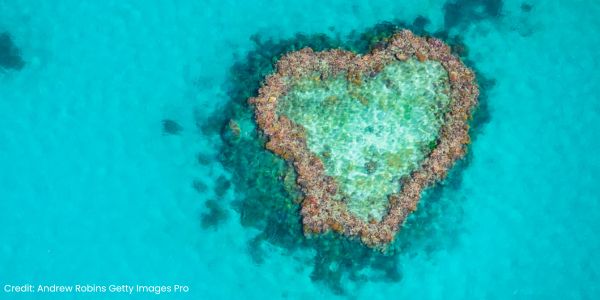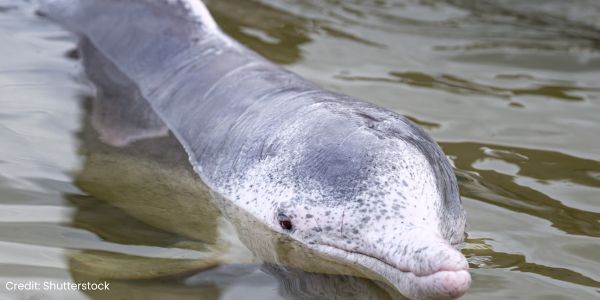What is the Environment Protection Act?
The Environment Protection Act is Australia’s main environmental and nature law. It is intended to give Australia a legal framework to protect and manage unique plants, animals, habitats and places.
Have you heard about protections for heritage sites, marine areas, wetlands and listed threatened and migratory species? The Environment Protection Act is a key legislative source of these protections [1].
What are the cracks in the current legislation?
When the Environment Protection Act was introduced in 1999, it marked a significant commitment by the Australian government to environmental conservation. However, the Act has not aged well. Over time, gaps in the legislation have become more evident, allowing ongoing degradation of marine habitats and endangering species. Although threatened and protected species are technically eligible for protection under the Act, the reality is far from satisfactory.
The Samuels Review, led by Professor Graeme Samuel AC, provides a scathing assessment of the Environment Protection Act’s efficacy. One of its key criticisms is that the Act is process-heavy and outcome-light. It outlines steps for evaluating environmental impact but loses sight of the ultimate goal: effective conservation. The review was a wake-up call, signalling that sweeping reforms are essential for better protection of our marine species [2].
What is the Australian Government’s response?
The Australian Government endorsed the recommendations of the Samuels Review through the Nature Positive Plan [3] in 2022. The Government has also committed funds to support key reform areas, such as the establishment of the new Environment Protection Australia, establishment of Environment Information Australia and legislating the commitments set out in the Nature Positive Plan [4].
The Government is currently undergoing the next stage of the review process, and will likely introduce new legislation in 2024.
This is why it’s so crucial we ask for politicians to help secure strong nature laws.

Heart Reef, found in the iconic Great Barrier Reef, is an incredible composition of coral that strong nature laws can help protect
What reforms do we want to see in the new legislation?
Together with multiple voices in the environmental movement, we are urgently calling on the Australian Government to introduce stronger nature laws that achieve the following:
✅ Enact strong and enforced National Environmental Standards that safeguard nature against further destruction.
✅ Properly fund habitat restoration and species recovery.
✅ Create an independent Environment Protection Australia that will monitor and enforce these laws.
✅ Close legal loopholes that favour big businesses over nature.
The reforms must include stronger laws that help to save the marine life we have left, adequate funding to recover threatened species populations, and the budget to monitor and enforce compliance.
Why do strong nature laws matter for dolphins?
We cannot overlook the importance of the ocean and marine life in discussions about nature laws. Australia’s shorelines serve as prime vantage points to observe dolphins in their natural habitats. These marine mammals, like their cetacean relatives the whales, are technically already safeguarded under the Environment Protection Act. However, critical to their conservation is the protection of key habitats where dolphins can be found all over Australia’s coastline.
Human activities that pose a considerable risk to dolphins or their habitats necessitate evaluation and consent in accordance with the Environment Protection Act. This encompasses undertakings such as oil and gas exploration, fishing, and construction projects close to regions commonly visited by dolphins. Measures to mitigate adverse effects must be enforced under the Act. For instance, boating routes could be adjusted to lower the likelihood of striking dolphins, and alterations to fishing techniques could be mandated to decrease entanglements with dolphins.

There are less than ~10,000 mature Australian humpback dolphins remaining. We’re calling for strong nature laws that would help protect them from key threats like habitat loss, being entangled in commercial fishing gear and boat strikes in protected areas.
What can you do to help?
We need your help now to ensure the Australian Government hears how urgently strong new environment laws are needed to protect our marine species and their habitats.
The Australian Government can hear this message in so many ways. Here are some simple ways you can share your experience:
- Add your message to a poster: Between 30 October – 5 November 2023, we’re calling all ocean lovers to add their message of love for the ocean to a poster. The following week, we’ll post this to Australia’s Minister for Agriculture, Fisheries and Forestry asking him to champion stronger, more effective nature laws. Add your message here.
- Sign our petition: Ask Australia’s Minister for Environment to secure strong nature laws that protect marine life and their homes. Sign our petition here.
- If you’re in Australia, speak to your local federal politician: Write directly to your local politician and ask them to secure strong nature laws. The key is to personalise your message and explain why this is important to you. Find your local politician here.
If you love the ocean, you can help save it.
Conclusion
With the Australian government now drafting new legislation, it’s a once-in-a-generation opportunity to secure strong nature laws. For the love of dolphins, whales, and the marine environment at large, let’s ensure the new Environment Protection Act is a powerful tool for genuine marine conservation.
References
- Department of Climate Change, Energy, The Environment and Water, What’s protected under the EPBC Act, https://www.dcceew.gov.au/environment/epbc/our-role/what-is-protected#:~:text=The%20Environment%20Protection%20and%20Biodiversity,marine%20areas%20and%20some%20wetlands.
- Department of Climate Change, Energy, The Environment and Water, Independent Review of the EPBC Act, Final Report, Key Messages, October 2020, https://epbcactreview.environment.gov.au/resources/final-report/key-messages
- Department of Climate Change, Energy, The Environment and Water, Nature Positive Plan: better for the environment, better for business, https://www.dcceew.gov.au/environment/epbc/publications/nature-positive-plan
- Department of Climate Change, Energy, The Environment and Water, EPBC Act Reform, https://www.dcceew.gov.au/environment/epbc/epbc-act-reform
